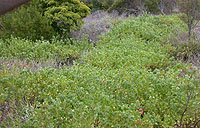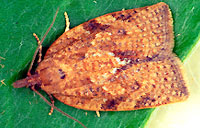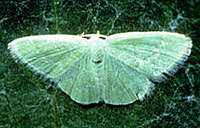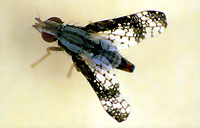| Entomology Home |

an overview
of biological control research in CSIRO Entomology
| Biological Control Home | ||
|
|
||
| Aquatic Weeds » | ||
|
|
||
|
|
||
| Biopesticides | ||
| Entomology Home | ||
| Biological Control Home > Classical biocontrol > Environmental weeds |
Bitou bush, Chrysanthemoides monilifera rotundata
Bitou bush (Chrysanthemoides monilifera rotundata) is a South African native which is now rated as the worst weed in the Australian coastal environment, restricting access to beaches and destroying native bushland. It first found its way to Australia in 1908, dumped as ballast from ships on the banks of the Hunter River. Between 1946 and 1968, it was deliberately planted by the Soil Conservation Service of NSW for soil and dune stabilisation along the eastern coast of Australia. Bitou bush currently
infests coastal areas of southern Queensland, New South Wales and
Lord Howe Island. It infests 900 km (80%) of the NSW coast and is
the dominant coastal plant on 400 of those kilometres. The bitou bush tip moth, Comosotolopsis germana (feeds in stem tips) and the bitou bush seed fly, Mesoclanis polana, (larvae feed on developing seed) are both now widely established.
Supported by: Natural Heritage Trust, Cooperative Research Centre for Australian Weed Management, NSW Agriculture
|




